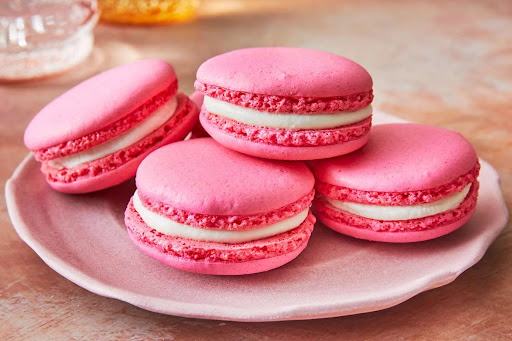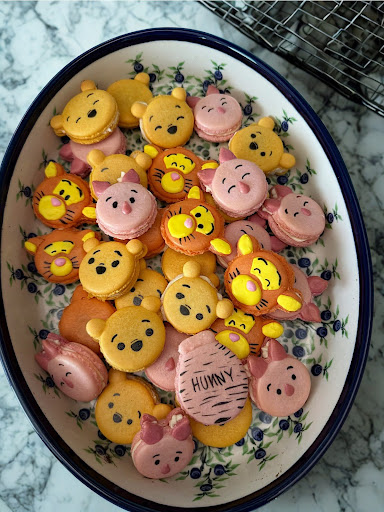Culinary School Macaron Tips That Actually Work
Hello Chefs,
Today we’re talking about the delicate, elegant, and (let’s be honest) slightly intimidating macaron. We made these in culinary school recently, and I was really excited—and a little nervous. Macarons have a reputation for being temperamental and tricky. People love to say things like, “Oh, macarons are so hard to make…”
But here’s the truth I learned: with the right techniques and a little patience, macarons are totally manageable. And honestly? They’re really fun once you get into them!

What Are Macarons, Anyway?
Macarons, pronounced mah-crons, (not to be confused with coconut macaroons) are delicate French sandwich cookies made from whipped egg whites, almond flour, and powdered sugar. They have smooth tops, ruffled “feet,” and a soft, chewy interior. They’re naturally gluten-free and perfect for filling with buttercream, ganache, or jam.
They’re also one of those pastries that feels magical when you get it right—and with a few techniques, you absolutely can.
Macaron Tips & Techniques I Learned in Class
🥚 1. Whip Your Egg Whites to Stiff Peaks
This step is key. You want your egg whites to be glossy and stiff, like a fluffy meringue that holds its shape. Don’t under-whip (you’ll get flat cookies) or over-whip (you’ll have trouble folding later). And yes—aged egg whites (left in the fridge 1–3 days) really do help with stability.
🍥 2. Master the Macaronage (Folding)
Folding the dry ingredients into the meringue is called macaronage, and it’s a fine balance.
You want to deflate the mixture just enough so that it flows like lava—thick and slow, but smooth. If it ribbons off your spatula and disappears back into the batter after about 10 seconds, you’ve nailed it. Too stiff = lumpy shells. Too loose = pancake cookies.
⏳ 3. Let Them Dry Before Baking
Once piped, macarons need time to dry out and form a skin—about 30–60 minutes or even longer depending on humidity. This helps create those iconic feet (the ruffled bottoms) and prevents cracking in the oven. Lightly touch the tops—if they don’t stick to your finger, they’re ready to bake.
📏 4. Tap Out the Air Bubbles
After piping, drop your tray firmly onto the counter a few times. This releases trapped air bubbles, which can otherwise turn into cracks. You can also use a toothpick to pop any visible bubbles or smooth over small imperfections.
🌡️ 5. Watch the Oven Temp Like a Hawk
Macarons like a stable oven—not too hot, not too cold.
- Bake around 300°F (150°C)
- Use an oven thermometer (your oven might lie)
- Rotate trays halfway through for even baking
Every oven is different, so your first few batches are a learning moment, not a failure.
Creative Macaron Fun: Shaping & Decorating
After class, I tried making macarons again on my own—and had so much fun turning them into shapes! I piped the batter into rough versions of characters for my niece’s birthday. Once piped, I used a toothpick to refine the shape, smooth out the edges, or add small details before they dried. They turned out so adorable. Here is a picture of the finished product:

Not too bad for my second time making macarons, and I had so much fun decorating them!
💡 Pro Tips for Shaping:
- Work fast with the toothpick—macaron shells start drying quickly, and once they set, you can’t adjust them.
- Don’t pipe too many at once—refine 4–6 at a time before moving to the next batch.
- Stick to simple shapes to start—think bears, hearts, stars. Circles are classic for a reason!
Final Thoughts
Macarons might have a scary reputation, but once you learn the rhythm—whip, fold, pipe, rest, bake—they’re so satisfying. They’re delicate, yes, but not impossible. Just treat them with care, attention, and a touch of playfulness.
Here is the recipe for the macarons.
Until next time, stay sweet and macaron on!
 Brennah Van Wagoner
Brennah Van Wagoner
Weekly Newsletter Contributor since 2025
Email the author! brennah.oaks@gmail.com
